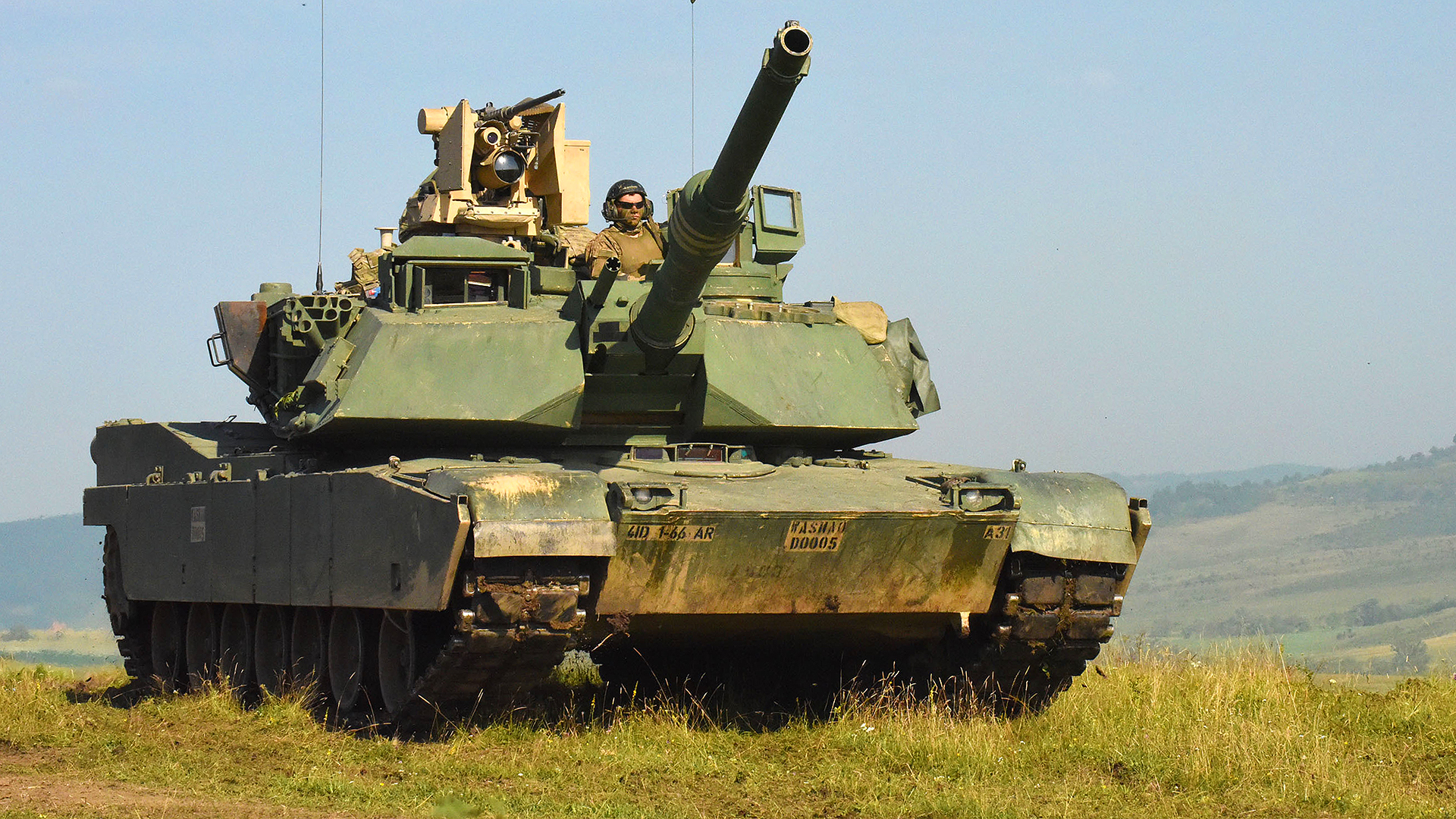April 4, 2004, “Iraq went to hell and the insurgency began,” recalled Erik Albertson, a retired U.S. Army senior non-commissioned officer who served as a tanker in all positions on the M1A1 and early versions of the M1A2 SEPv2 Abrams main battle tank.
As Moqtadr al-Sadr’s Mahdi Army launched attacks against U.S. forces in Baghdad, Kut, and An Najaf, 20 U.S. soldiers were trapped in Sadr City in northern Baghdad. Seven Abrams from Albertson’s unit, the C Company “Crusaders” of the 2nd Battalion, 37th Armor Regiment, part of the 1st Brigade of the 1st Armored Division, were called in to help rescue them.
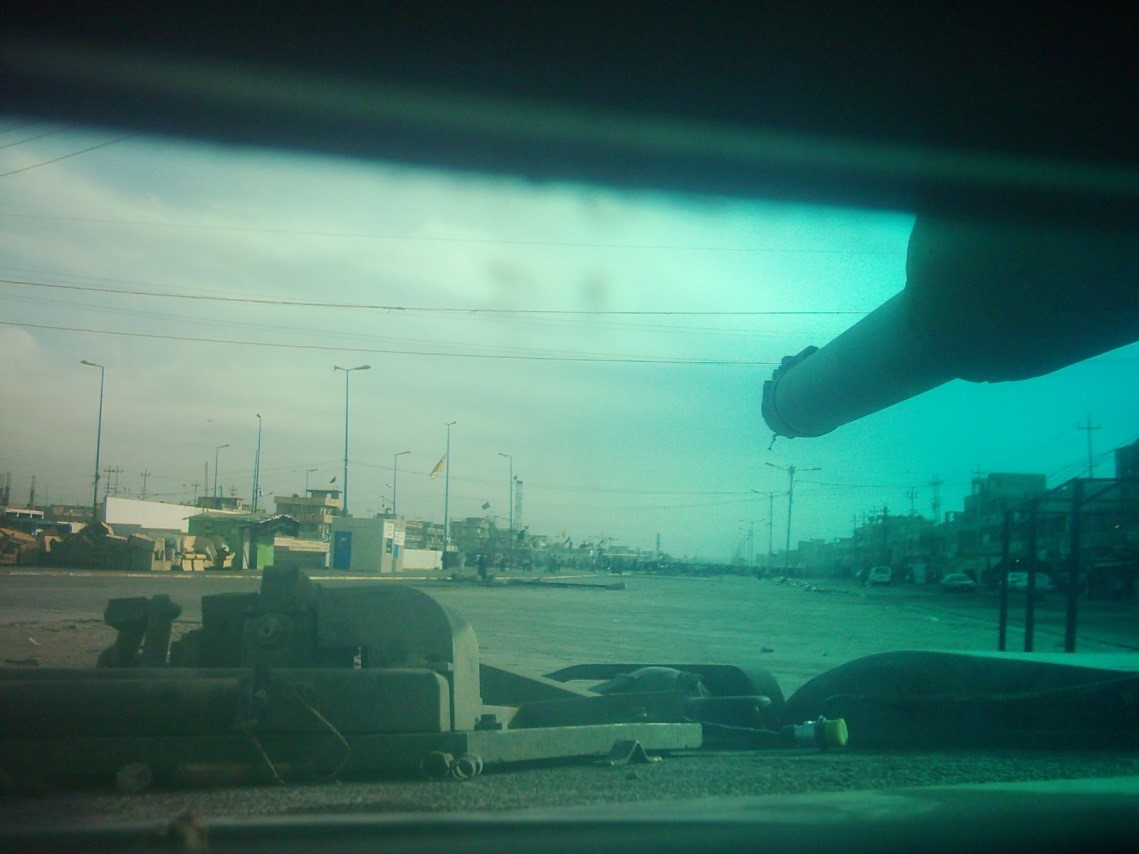
The ensuing battles, and others in a tough urban environment, showed what the Abrams can do in fierce combat, Albertson, now head of training and a WWII armor historian for WW2 Armor, a museum and organization in Central Florida, told The War Zone. The success in those fights, where Abrams tanks survived hits with grenades, RPGs, RPKs, various other small arms, and a range of mortars including 120mm types, were a good indication, he added, for the success they can have in Ukraine. The country will will receive 31 Abrams tanks from the U.S., President Joe Biden announced Wednesday.

On Thursday, the Pentagon added that some form of the M1A2, a relatively advanced variant of the tank, will be sent to Ukraine.
Albertson and other retired soldiers with experience on the Abrams raved to The War Zone about its capabilities on the battlefield and how it would perform against the Russian tanks in Ukraine it was originally designed to fight.
The Abrams is considered among the best tanks in the world. But the numbers and timetable of their delivery to Ukraine – months at least, the Pentagon said on Thursday – raises the question about whether they will be more symbolic than a silver bullet for Kyiv’s desire to liberate its nation to pre-2014 borders. And that doesn’t even take into account the major logistic challenges of fueling, maintaining, sustaining, and arming the Abrams, which we will discuss in more detail later.
The 31 Abrams being sent to Ukraine plus the 14 Leopard 2A6 tanks Germany has promised are “a demonstration of political support, and a shared political support across two NATO nations,” Pat Donahoe, a retired U.S. Army major general who was a combined arms battalion commander in Iraq and commanded Fort Benning, Georgia and its Army Maneuver Center of Excellence, told The War Zone Wednesday morning. “Now it’s time for the politicians and military leaders to make an informed decision on what is the best tank to field in numbers that matter.”
What Abrams Can Do In Ukraine
“The Abrams is an amazing main battle tank that can take a beating, either from enemy fire or mother nature, and keep going,” said Albertson, the Abrams crew member who served in the early days of Operation Iraqi Freedom.
“During our nearly 15-month deployment, from May 2003 – July 2004, we were predominately heavy on tanks for pretty much most of the deployment. We put on thousands of kilometers on our tanks driving all around central Iraq supporting our parent division 1st Armored Division, 2nd Cavalry Regiment, 82nd Airborne Division, and 1st Cavalry Division.”

Despite “the wear and tear on the tracks and turbine engines in the heat and sand, our Abrams kept going and was a dominating presence wherever we went,” he said. “One doesn’t realize how intimidating the Abrams, especially a platoon plus together, is until it is deployed and unleashed.”
In addition, “it is relatively quiet with its 1,500hp turbine engine even in an urban environment,” Albertson said. “There was one operation on June 1st, during Operation Smackdown in Al-Kufa, where our tanks led an attack (my tank in the lead) along with our cavalry scouts, and we came around the corner to the enemy controlled terrain and 20 fighters (most with RPGs) just stood there in shock as we rounded the corner. They didn’t hear us moving through the city until it was too late and we were less than 100 yards away barreling down on their position.”
“You can assume what happened next.”
Ukrainian troops are fighting in many types of terrain, from open farm fields, to forests, to the cities.
“These are all environments where the tank, in conjunction with the infantry, can and will excel at if executed properly,” Albertson said. “The tank allows your force to really seize control and hold key strategic positions either in a heavily wooded area or a city, if utilized properly.”
The Abrams, he pointed out, has encountered Russian-supplied tanks going back to Operation Desert Storm in 1991.
“The battles such as 73 Easting, Battle of Medina Ridge, Battle of Norfolk, and Battle of Kuwait International Airport gives you a good example of what the Abrams is capable of doing to Russian tanks, up to at least back then the T-72, which is currently used in Ukraine, along with the older T-64,” Albertson said.

During Desert Storm, 23 out of some 2,000 Abrams tanks deployed to the combat zone were destroyed or damaged, according to a 1992 Government Accounting Office (GAO) report. Of the nine Abrams destroyed, seven were due to friendly fire, and two were intentionally destroyed to prevent capture after they became disabled.
“These battles during Desert Storm were with the first generation of M1 and M1A1 Abrams, and look at how they have been upgraded since,” Albertson said.
At the moment, the fighting in Ukraine has slowed down to a bloody, static slog across most of the front lines. There is heavy fighting in and around the city of Bakhmut in Ukraine’s eastern Donetsk Oblast, where Russian forces, largely led by the Wagner mercenary group, are pushing toward the city.
In Luhansk Oblast, also in the eastern end of the country, the Ukrainians are making incremental gains toward the small city of Kreminna.
But both sides have indicated they will pursue wider, more dynamic offensives, like Russia’s initial attacks in February and Ukraine’s advances over the fall in the Kharkiv and Kherson Oblasts to the north and south, respectively.
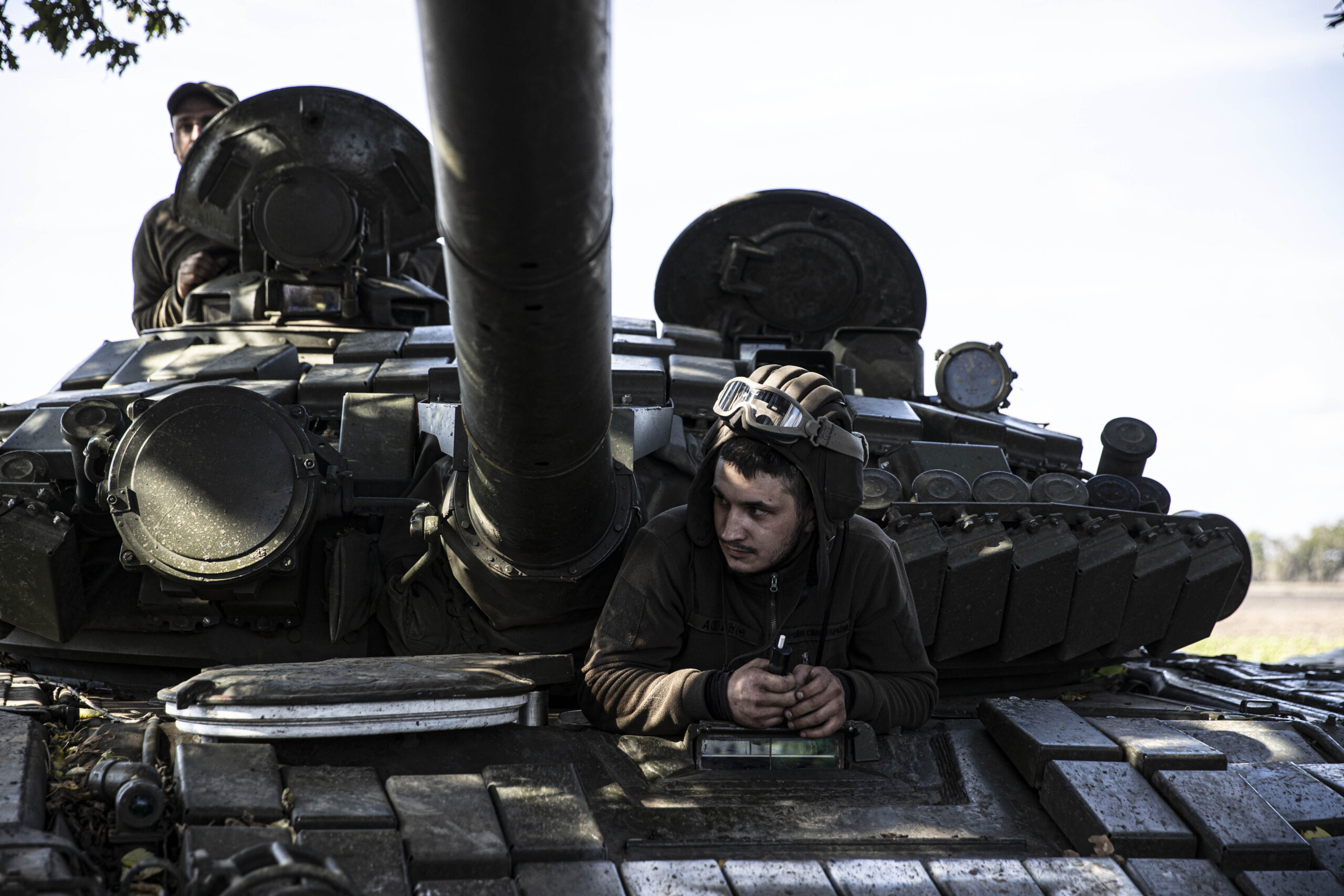
“Providing armored capabilities will improve the Ukrainians’ ability to maneuver, which is a critical asset for Ukraine as they continue to defend and reclaim their territory,” a senior administration official told reporters, including from The War Zone, Wednesday morning. The official spoke on condition of anonymity to discuss the Biden Administration’s plans to deliver Abrams tanks to Ukraine.
“On this tank specifically, I’m proud to say that Abrams tanks are the best in the world,” the official said. “This is a tremendous new capability that Ukraine will be getting to boost its long-term defenses.”

Ukrainian troops “want to press the Russians to secure their terrain,” said Donahoe, the retired Army major general. “That will require the ability to fight through complex defensive areas, breach that and then be able to put a highly maneuverable armored force into the exploitation role through a penetration of those lines.”
In sufficient numbers, the Abrams, he said, would be of great value in such an effort.
How much difference can be made by 31 such tanks, enough to fill out one Ukrainian tank battalion, remains to be seen.
The Challenges Ahead
There has been an incredible amount of attention focused for months on whether the U.S. government would provide Ukraine with Abrams tanks. It is a move the Pentagon and White House repeatedly downplayed the possibility of, pointing out concerns about the sustainment, maintenance, and fuel and ammunition supply requirements of the advanced tank.
Just last week, Undersecretary of Defense for Policy Colin Kahl told reporters at the Pentagon that the U.S. government was not ready to send Ukraine Abrams tanks.
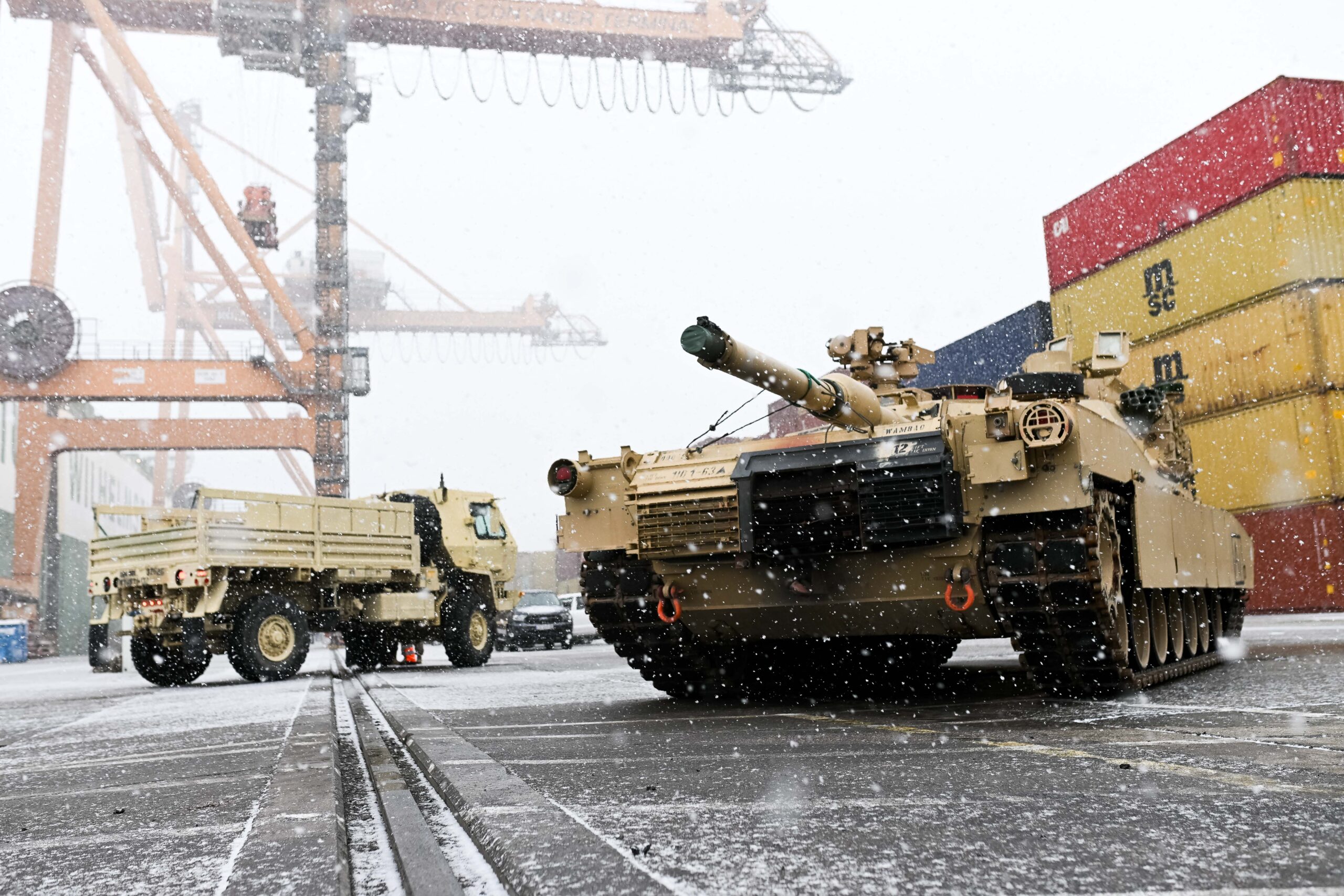
“I just don’t think we’re there yet,” Kahl said about providing Abrams tanks, and contractors to service them, to Ukraine.
Defense Secretary Lloyd Austin “has been very focused on … not … providing the Ukrainians a system they can’t repair, they can’t sustain and they, over the long term, can’t afford, because it’s not helpful,” said Kahl.
But even all that aside, the Abrams in and of itself is not a magic weapon that will automatically change the course of the war.
“We’ve all got to understand that the tank in and of itself is not a silver bullet,” said Donahoe. “The tank is at the heart of the combined arms team. So that’s a tank-infantry team at its nucleus. In the armored force, that’s a tank and a mechanized infantry force.”
To succeed, it has to be part of a larger, combined arms effort that includes artillery, engineering, and intelligence, surveillance, and reconnaissance elements “that knit together the extreme lethality and ability of a modern armored brigade, armored division concept,” Donahoe said. “And so when you look at what the Ukrainians are asking from us, they are asking to develop mechanized forces on the western model.”
To date, one of the key reasons Ukraine has regained so much of the territory it initially lost has been its ability to carry out these combined arms maneuvers while Russia has not been able to.

But it is one thing to have the tanks. It is quite another to keep them in the fight, a challenge greatly increased by the complexity and logistical demands of the thirsty Abrams.
“It is the perfect tank for a professional army that emphasizes survivability,” a retired Army lieutenant colonel who served in tactical assignments on the Stryker armored vehicle, the Bradley Fighting Vehicle, and the Abrams told The War Zone. But “M1 formations require significant logistics capabilities.”
One huge consideration is fuel, said the retired officer, who spoke on the condition of anonymity to discuss details of the Abrams.
“The M1’s turbine engine consumes a massive amount of fuel anytime the engine is running,” said the retired officer. “Which would be near continuously. An M-1 formation would require about 300 gallons every eight hours. Its fuel tank holds 500 gallons. Bottom line is that any formation company-sized or larger would require dedicated fuel trucks.”
The Abrams was designed with the assumption that it would be supported by the massive U.S. logistical tail, Donahue said.

“That level of fuel delivery to the forward areas will be challenging for Ukrainians,” said Donahoe. “We’ll have to then also figure out how do we provide them the fuel hauling and delivery capability that’s gonna be required.”
The good news, said Donahoe, is that the Abrams gas turbine engines are designed to handle a wide variety of fuels, not just jet fuel. Diesel fuel and gasoline can both be used to power the tank.
“There’s an impact on fuel consumption rates. There’s an impact on maintenance time including between failures. But you can fire up the Abrams on virtually any kind of fuel.”
Then there is sustaining the amount of ammunition that will be required.
“The M-1, particularly in the type of combat it would see in eastern Ukraine, would use a lot of ammunition,” said the retired armor officer. “Both the 105mm and 120mm versions of the tank offer multiple ‘warhead options’ and hold significant amounts of small arms ammunition” for the two 7.62 machine guns and the 50 cal machine gun. “Keeping the M-1 armed, like fuel, consumes significant logistic assets.”
One additional benefit of Germany and other nations providing scores of Leopard 2 tanks is that they both have main guns that share the same 120mm ammunition, Donahoe noted, meaning that the ammunition would be interchangeable, reducing some of the logistical load.
Keeping a steady supply of repair parts is of vital importance, too.
“The M1 engine/ transmission is a complex machine that does not tolerate ‘shade tree’ mechanics. The engine/transmission – known as the Full Up Power Pack or FUPP – weighs in at 2,500lb and is difficult to remove and work on. US M1 tank mechanics are well trained and resourced with repair parts and specialized tools.”

Maintaining the Abrams’ electronic systems, he added, is not a major concern.
The main electronic systems on the tank are either extremely resilient or have redundancy of some sort, he said, with external communications systems being the notable exception.
“However, a properly trained tank platoon should be able to operate effectively with limited or no comms,” he said.
Another fact of life when it comes to fighting in Ukraine is the thick, oozing mud that can bog down heavy vehicles like the Abrams.
But the Abrams “was built to fight in Europe, despite the fact that most of its fame was won in Kuwait (Desert Storm) and Iraq (OIF),” said the retired armor officer. “That being said, the Ukrainian forces will require significant towing capability to recover stuck or damaged tanks that it likely does not currently possess.”

In an effort to address that concern, the Biden administration’s Abrams package included eight M-88 Hercules recovery vehicles.
The M-88 Hercules is a fully-tracked, steel-armored recovery vehicle that performs hoisting, winching, and towing operations for heavy combat systems like Abrams tanks. It is equipped to assist in the repair of disabled vehicles under general field conditions and to recover vehicles under hostile fire.

“I’m glad they got the M-88s but the ‘rub’ will be in employing them and using limited maintenance capability well,” said the retired armor expert. “This is the far less sexy side of ‘combined arms operations’ (this is admittedly a stretch on the term).”
Another factor to consider is the weight of the Abrams.
“The Ukrainian T-84 weighs in at 46-51 tons; the M1A1 at 63 tons,” he said. “The weight can be problematic when crossing bridges not designed to sustain that much weight.”
Training Ukrainians on how to confidently operate the tanks will also be key, said Albertson, the tank crew member who fought in Iraq.
“The tank is as good as its crew for it is. Its crew is the tank’s beating heart,” he said. “The better the crew functions together as a team, the better the tank itself is when it comes to tactical operations. You can have the world’s most superior tank, but if your crew is insufficiently trained, equipped, and logistically supported, then the ‘superior tank’ is worthless.”
Conversely, he said, “you can have older outdated tanks, but if your crews are top notch, well trained, and logistically supported, then they can wreak just as much havoc.”
“Our tank crews who have operated the Abrams are some of the best in the world, along with those of our NATO allies,” Alberston said. “Our tankers continuously train both in garrison, through gunnery, to field rotations. This is what makes our tankers on the Abrams so successful.”
The training for new U.S. Abrams tank crew members is now 22 weeks, where it used to be 17 weeks up until a few years ago, he said.
“That is a lot of training and that is just their basic tank training and doesn’t include unit training once they arrive,” said Albertson. “You cannot just jump on the tank and go; especially the latest versions. The tankers equipped with the Abrams, and really any modern main battle tank such as the Leopoard, Leclerc, and Challenger, must go through extensive training both in tactics, vehicle operations, vehicle identification, maneuvers, vehicle capabilities, maintenance procedures, gunnery, etc to be a useful and successful crew. If time and training is [sic] not provided to the crews then it doesn’t matter what tank you operate.”
“The tank regardless of the variant is only as good as its crew. Training is key.”
The retired Army lieutenant colonel agreed, adding that it will be important for Ukrainian armor officers to get trained on how to operate the Abrams at the company level and above.
“While the Ukrainian soldiers undoubtedly have combat experience, they likely lack experience maneuvering formations at the company plus level,” he said referring to company-sized units and larger ones. “This experience is typically built in the U.S. at our maneuver centers like the National Training Center at Fort Irwin. Learning how to maneuver and fight as a formation requires multiple iterations.”

The Ukrainians were promised 31 Abrams tanks because that’s the number in a Ukrainian tank battalion.
That’s the equivalent of two U.S. tank companies. By comparison, Ukraine still uses the old Soviet model, Donahue said. There are three tanks in a platoon, three platoons in a company and three companies in a battalion. The company and battalion commanders also each have one tank.
The bottom line, said the retired armor officer, is that the Abrams, once employed, “will have an immediate and overwhelming effect at the tactical/single battle level.”
But the “proof of their ‘game-changing’ ability will be in the employment of a combined-arms campaign.”
It is one thing, he said, to seize an objective “but a whole different kettle of fish to string together a campaign. The good news, is that with the ‘rest of’ NATO/Europe supporting the introduction of tanks, the Ukrainian forces will be able to develop a Ukraine-version of ‘combined arms maneuver’ that fits their problem set. One thing they have certainly demonstrated is the ability to rapidly adapt and incorporate capability solutions in a creative and effective manner.”
But another thing to consider when it comes to combined arms training is that, unlike with U.S. plans, Ukrainian troops can’t count on close air support given their shortage of aircraft and strong Russian air defenses.
But the Ukrainians can mitigate that, said the retired lieutenant colonel, “through the creative employment of [unmanned aerial systems], artillery, and critically in this conflict, air defense.”
There is also the larger picture question of how Ukrainians will mesh together so many different tanks into a cohesive order of battle.
“I think probably one of the most demanding jobs in the world today would be a Ukrainian army logistician, because they are fielding multiple systems from multiple nations and it’s not just tanks,” said Donahoe. It’s also a wide array of artillery pieces and armored vehicles “which all require a separate replacement part pipeline. They all require training and mechanics to be able to do repairs. They all require the training of the crews to do the crew level maintenance on it. So the logistics challenges of the multiple systems and multiple variants and multiple nations providing systems to Ukraine is a very, very complex environment to logistically sustain that force.”
The senior administration official on Wednesday told reporters that the U.S. is working through the logistic and supply considerations.
“DoD is currently working through the mechanisms to deliver the fuel and equipment Ukraine will need to operate and to maintain the Abrams,” the official said.
Sustaining and maintaining the tanks, and training the crews to operate them “are all really important considerations,” the official said. “We will have the ability to put in place a very careful training program but also a very careful program to be able to maintain and sustain these.”

Training Ukrainian troops on how to operate and maintain the Abrams tanks will take place outside of Ukraine, most likely in Germany, where Ukrainian troops are already undergoing a new maneuver training program.
The Abrams “do require a big deal of assistance,” said the official, noting that in addition to the Abrams tanks, the U.S. will send over eight M-88 recovery vehicles “able to provide coverage after operations to make sure that the Ukrainians will be able to keep these Abrams up and running.”
Donahoe said that with enough training and a robust supply line, “Ukraine is more than capable to be trained on and to maintain the system.”
Having private contractors in the field would help, though it is unclear if General Dynamics Land Systems, which now makes the Abrams, will do so. We reached out to the company and will update this story with any information they provide.
The bigger issue, said Donahue, is providing a significant number of the same types of tanks to allow Ukraine to accomplish its objectives while minimizing the strain on its logistics systems.
“I believe that the west – now that we’ve made the political decision to provide systems from multiple nations – the best thing we could do is pick the Abrams or the Leopard 2 system and decide if that’s the one we’re gonna field the bulk of and then field that in numbers that matter – 250 or 300 of those tanks.”
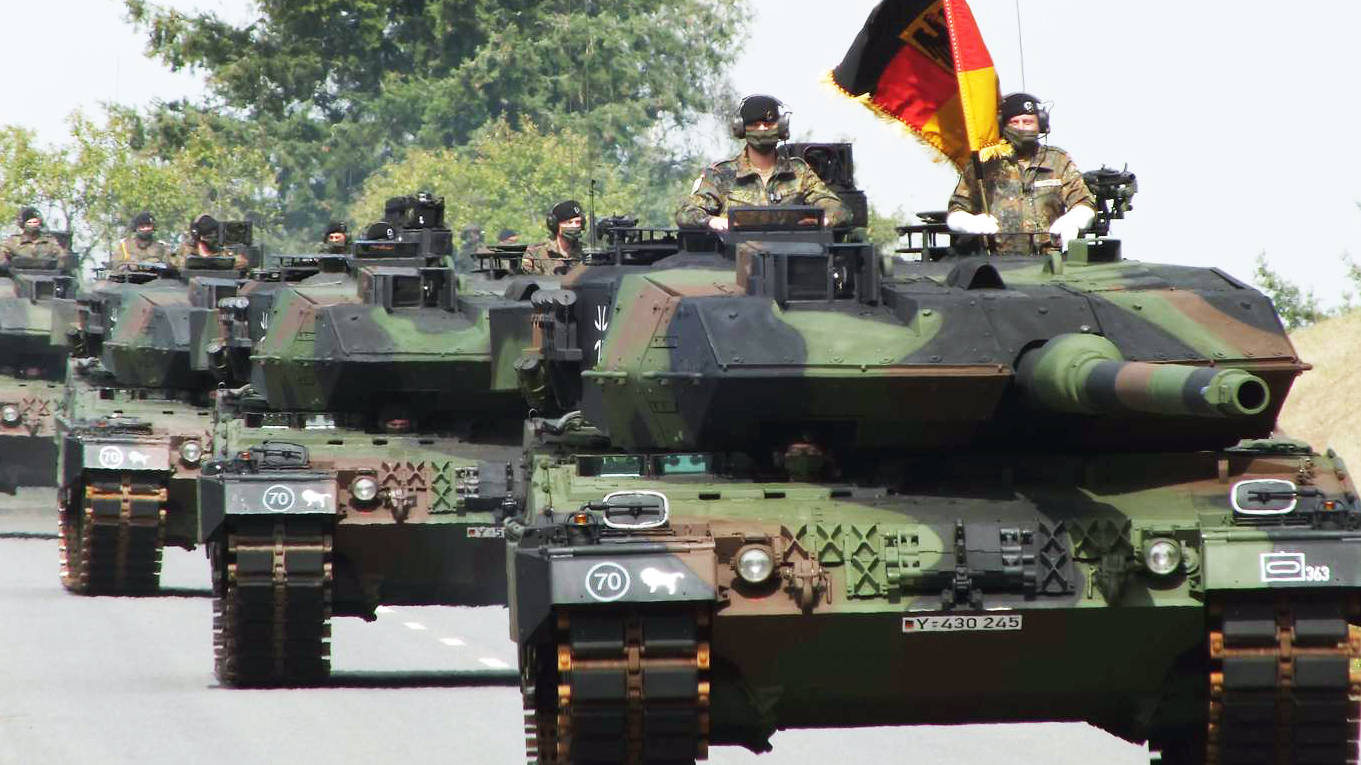
It took months of internal debate and a great deal of international pressure for the U.S. to send even 31 Abrams tanks to Ukraine. It will take months for Ukrainian crews to get trained to operate and fix them before they arrive on the battlefield. Meanwhile, several NATO member nations have come forward with offers to donate their Leopard 2 tanks, of which they have more than 2,000 in different variants.
While the small number of Abrams tanks being sent to Ukraine may not be an outright game-changer, they certainly will be a major boost to the country’s mechanized combat capabilities. And it’s still very possible that Ukraine could receive much larger numbers of Abrams, but hopefully by the time that could even occur, the war will have been long over.
Contact the author: howard@thewarzone.com
